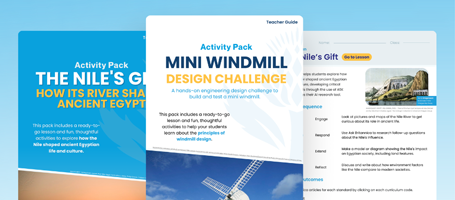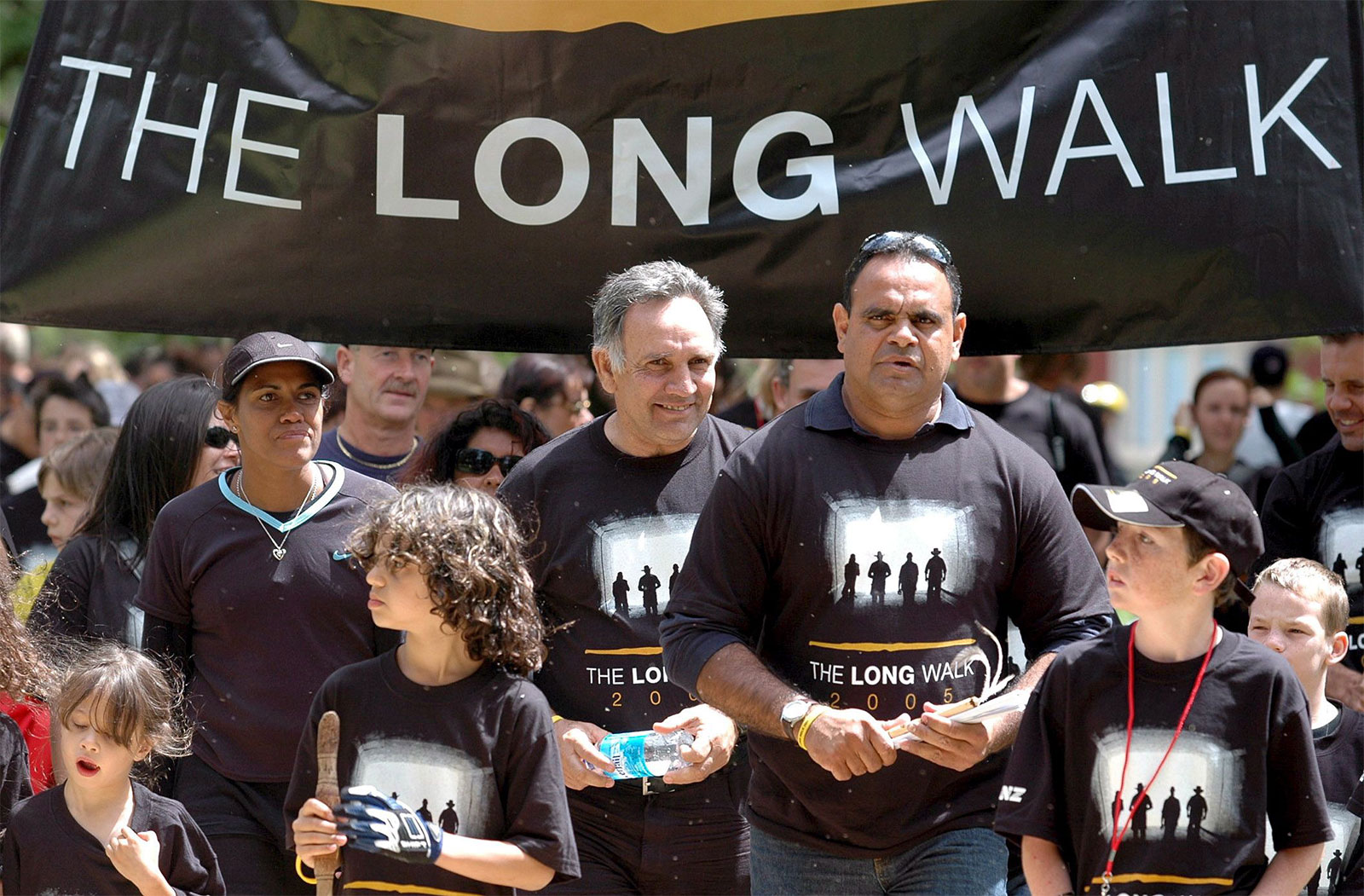Each year from 26 May to 3 June, Australia celebrates National Sorry Day and Reconciliation Week to show respect for the heritage and achievements of the Indigenous Peoples and to remember and honour the Stolen Generations.
National Sorry Day and National Reconciliation Week is a chance for educators to help schools and communities recognise and communicate the truth of Australia’s colonial history in a way that fosters understanding, respect and a deeper awareness of our shared past, present and future.
The curriculum-aligned activity sets in this article are created to supplement resources from Britannica School.They can be used as a basis for lessons or events around the theme of reconciliation. Contact your librarian to find out if your institution already has access to Britannica School or claim your own free trial.
Please note: Aboriginal and Torres Strait Islander People should be aware that this website may contain images, voices or names of deceased persons in photographs, film, audio recordings or printed material.
Unit Title
Reconciliation Week – Recognition
Years
3-8
Key Learning Areas
History, Humanities and Social Sciences (HASS)
Curriculum Links
Australian Curriculum
• Year 3 HASS
| Code | Elaborations | |
|---|---|---|
| ACHASSK064 | Days and weeks celebrated or commemorated in Australia (including Australia Day, Anzac Day, and National Sorry Day) and the importance of symbols and emblems. | – Examining the symbolism of flags (for example, the Australian, Aboriginal and Torres Strait Islander flags) and recognising special occasions when they are flown (for example, all three flags are flown during NAIDOC Week, National Reconciliation Week, National Sorry Day and Mabo Day) and the roles, rights and responsibilities the community has when observing protocols around flag flying. – Recognising the significance of other days or weeks (including the anniversary of the national Apology to Australia’s Indigenous Peoples of 2008, National Reconciliation Week, International Women’s Day, Labour Day and Harmony Day). |
• Year 5 HASS
| Code | Elaborations | |
|---|---|---|
| ACHASSK118 | How people with shared beliefs and values work together to achieve a civic goal. | Discussing ways people resolve differences (for example, through negotiation and Reconciliation). |
• Year 6 HASS
| Code | Elaborations | |
|---|---|---|
| ACHASSI129 | Evaluate evidence to draw conclusions | Proposing reasons why socially sustainable practices such as negotiation, arbitration and Reconciliation and cultural mediation resolve issues peacefully |
| ACHASSK135 | Experiences of Australian democracy and citizenship, including the status and rights of Aboriginal and Torres Strait Islander Peoples, migrants, women and children | Investigating the experiences of democracy and citizenship of migrant groups (for example, White Australia Policy, internment camps during World War II, assimilation policies, anti-discrimination legislation, multiculturalism, Reconciliation, mandatory detention, pay and working conditions) |
NSW Curriculum
| Code | |
|---|---|
| HT2-1 | Identifies celebrations and commemorations of significance in Australia and the world. |
VIC Curriculum
History/Level 3 and 4/Historical Knowledge/Community, Remembrance and Celebrations.
| Code | Elaborations | |
|---|---|---|
| VCHHK076 | Significance of days and weeks celebrated or commemorated in Australia and the importance of symbols and emblems, including Australia Day, Anzac Day, Harmony Week, National Reconciliation Week, NAIDOC Week and National Sorry Day. | Identifying and discussing the historical origins of an significant Australian celebration or commemoration. |
Assessment:
- Various work samples based on tasks completed e.g. Reconciliation Poster, Comic Strip
- Observation of students as they research and work through the task elements
- Observation of discussions
Resources:
- Internet access
- Device
- Poster Paper
- Various art materials
Introduction:
Reconciliation must live in the hearts, minds and actions of all Australians as we move forward, creating a nation strengthened by respectful relationships between the wider Australian community and Aboriginal and Torres Strait Islander Peoples. Make reconciliation part of your story and your future.
May 27th signifies the commencement of National Reconciliation Week with the celebration of National Sorry Day. The week offers Australians an opportunity to learn more about the Aboriginal and Torres Strait Islander People and their cultures.
In February 2008, Prime Minister Kevin Rudd made a statement officially apologising for the mistreatment and heartache brought upon the Indigenous Australian People during Australia’s colonial period, particularly to the Stolen Generations and their families and communities.
Teaching Strategies / Learning Experiences:
The following resources and activity sets can be expanded into lesson plans or events, distributed as guided study resources or used to frame further group discussions. Supporting media can be displayed on an interactive whiteboard or projector to encourage collaboration in a classroom environment.
Activity: Welcome to Country
Use Britannica School or other sources to explore the significance of the traditional Indigenous ceremony “Welcome to Country” and answer the following questions. Students can be directed to watch this Welcome to Country video from the AIATSIS website to assist their research.
- When is the Welcome to Country ceremony performed?
- Who is involved in the ceremony?
- What elements are involved in the ceremony?
- What are the protocols for conducting a Welcome to Country ceremony?
- Why do the Aboriginal People perform such a ceremony?
- What are the differences between Welcome to Country and Acknowledgement of Country? Use a 2 Circle Venn Diagram to compare these ceremonies.
Activity: Acknowledgement of Country
‘Acknowledgement of Country’ is a way that all people – both Aboriginal and non-Aboriginal – can recognise and respect Aboriginal culture and history. This is an opportunity for anyone to acknowledge the Traditional Owners of the land. It is usually offered at the beginning of an event, meeting or speech.(1)
An Acknowledgement of Country is different from a Welcome to Country. A Welcome to Country is much more formal; it must adhere to certain protocols and can only be delivered by Traditional Owners or Aboriginal and Torres Strait Islander People who have been given permission from Traditional Owners to welcome visitors to their Country.
Using the AIATSIS Map of Indigenous Australia, ask students to research who the traditional land owners are in their area and create an Acknowledgement of Country statement acknowledging the traditional land owners.
Remember there are no set protocols or wording for an Acknowledgement of Country. Students can refer to this fact sheet from Reconciliation Australia to assist with their statement.
Share the statements as a class.
(1) Excerpt taken from “Indigenous Australian Country.” Britannica School, Encyclopædia Britannica, 8 Apr. 2019. school.eb.com.au/levels/primary/article/Indigenous-Australian-Country/629050. Accessed 11 Apr. 2019.
Activity: Flags of Australia
Flags are powerful symbols that can represent a country, community, group or even individual. Research the history and significance of each of the following Flags of Australia. Illustrate each flag and display them in your classroom.
Aboriginal Flag
Australian Flag
Torres Strait Islander Flag
Activity: Host a Reconciliation Morning Tea
Host a Reconciliation Morning Tea to bring your school and local community together in recognition of National Reconciliation Week, asking them to “Stop, Reflect and Take Notice” of reconciliation in their own lives.
Have students examine Indigenous artworks, taking note of the techniques, colours and styles found in these works. Create a “Stop, Reflect and Take Notice” poster advertising the Reconciliation Morning Tea. Incorporating elements of Indigenous art into the poster.
Rock Painting: Australian Aboriginal Art
Australian Aboriginal Peoples: Rock Art
Kakadu National Park: Aboriginal rock art at Nourlangie Rock
Rainbow Serpent
Invite local elders to participate in the morning tea. Ask the elder if they would perform an official Welcome to Country to open the morning tea.
Activity: NEOMAD
Watch the NEOMAD series, a live action comic series that explores the story of Love Punks, a group of tech savvy young heroes and their adventures as they learn about their culture from the Murujuga Rangers.
NEOMAD is an example of how thousands of years of Aboriginal cultural heritage is being re-interpreted using contemporary tools and mediums.
Extension
Students create their own comic strip or video illustrating something significant from their lives and culture.
More Educator Resources
Sign up with your email for more free resources from Britannica.
These activities and resources have been created using content from Britannica School, the go-to site for safe, comprehensive student research. Contact your librarian to find out if your institution already has access. Find out more about Britannica School or set up your own free trial.

